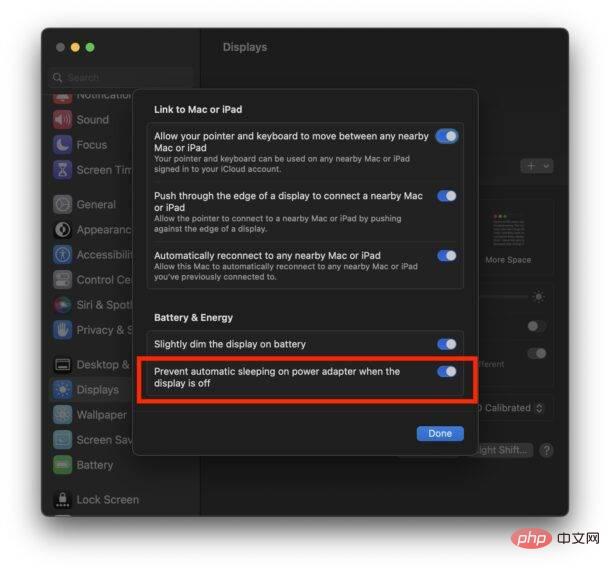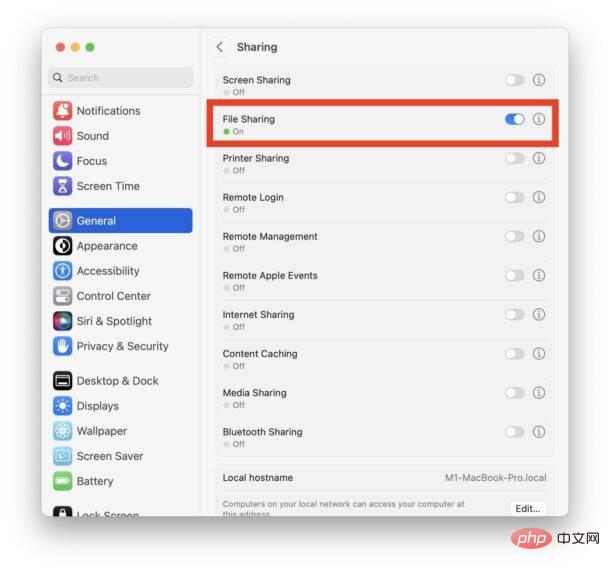We receive many questions about how to move files to an external hard drive on Mac. In this article, we will provide you with detailed answers and hope to be helpful to you. Let’s take a look now!
How to copy MAC system stuff to the external hard drive
It is very simple to install NTFS for Mac correctly. Simply restart your Mac system and open System Preferences, where you will find the icon for the software. Under normal circumstances, after installing the software, when you insert the NTFS file system disk again, you can immediately perform operations such as storing, creating, and deleting files normally without making other software settings.
First, click the starter below to start the air starter. Then, click on the mounty to find the online software. Once opened, the menu bar will display a mountain icon. Next, plug the removable hard drive's cable into your Mac computer. Click the hard drive icon on the desktop. Finally, just drag the file to the portable hard drive.
Check the partition format of the mobile hard disk and find that it is in NTFS format. However, when I right-clicked on the mobile hard drive, I did not find the "New Folder" option. At this time, we can use Mounty11 software to help us copy files to NTFS format storage devices. This software can solve the problem of file copying.

How to move a file to another disk in Apple system?
1. Check the partition format of the mobile hard disk and find that it is in NTFS format . However, when I right-clicked on the mobile hard drive, I did not find the "New Folder" option. At this time, we can use Mounty11 software to help us copy files to NTFS format storage devices. This software can solve the problem of file copying.
2. It is very simple to install NTFS for Mac correctly. Simply restart your Mac system and open System Preferences, where you will find the icon for the software. Under normal circumstances, after installing the software, when you insert the NTFS file system disk again, you can immediately perform operations such as storing, creating, and deleting files normally without making other software settings.
Download the NTFS software below to your computer and double-click it. Drag the NTFS file here into the application folder. Next, click NTFSforMac.app to install and open it. Enter your computer's administrator password and click Install Helper.
Download the NTFS software below to your computer and double-click to open it. Then drag the NTFS file into the application folder. Next, click NTFS for Mac.app to install it and open the application. Enter your computer's own password and click Install Helper.
Solving the problem of Mac operating NTFS formatted disks is very simple, just install an NTFS for Mac reading and writing tool. However, if the hard drive is damaged or the file system is corrupted, the hard drive will become inoperable.
In the Mac system, files cannot be copied directly to the mobile hard disk because the mobile hard disk or USB flash drive usually uses the NTFS partition format under the Windows system, and the Mac system does not natively support this format. This is why the file cannot be copied to the hard drive. In order to solve this problem, you can use some third-party software or reformat the mobile hard drive into a format supported by the Mac system, such as Mac OS Extended (HFS) or ExFAT. In this way, files can be successfully copied to the mobile hard drive in the Mac system.
How to copy files to a mobile hard drive on a MAC Apple computer?
1. It is very simple to install NTFS for Mac correctly. Simply restart your Mac system and open System Preferences, where you will find the icon for the software. Under normal circumstances, after installing the software, when you insert the NTFS file system disk again, you can immediately perform operations such as storing, creating, and deleting files normally without making other software settings.
2. First, click the starter below to start the air starter. Then, click on the mounty to find the online software. Once opened, the menu bar will display a mountain icon. Next, plug the removable hard drive's cable into your Mac computer. Click the hard drive icon on the desktop. Finally, just drag the file to the portable hard drive.
3. Check the partition format of the mobile hard disk and find that it is in NTFS format. However, when I right-clicked on the mobile hard drive, I did not find the "New Folder" option. At this time, we can use Mounty11 software to help us copy files to NTFS format storage devices. This software can solve the problem of file copying.
4. Reformat the mobile hard disk into FAT32 format. Of course, you need to back up the data originally saved on it, and then you can copy the data on the mac to the mobile hard disk. However, due to the limitations of the FAT32 format, the size of a single file copied is limited and cannot exceed 4G.
5. Step one, click the "File" menu bar at the top of iPhoto, then click the "Export" button, see the picture below, go to the following steps.
How does mac read a mobile hard disk?
If the mobile hard disk currently used is FAT32 or Mac extended type, you can perform any read and write operations directly on the Mac system. When using a mobile hard drive, many friends may have encountered the problem of being unable to copy files to the hard drive, or being unable to delete files.
How to use mac to read mobile hard drive Use USB cable to connect the mobile hard drive to Mac computer. Click the Apple icon in the upper left corner of the screen and select About This Mac to view the operating system version of your Mac computer. Find Finder from the desktop or application and click to open it.
The steps to use a mobile hard drive on Mac are as follows: Insert the mobile hard drive into the USB interface of the Mac computer. A new hard drive icon will appear on the desktop, double-click to open it. If the external hard drive is new, Mac will prompt you to format the hard drive.
How to copy things from Apple computer to mobile hard drive
It is very simple to install NTFS for Mac correctly. Simply restart your Mac system and open System Preferences, where you will find the icon for the software. Under normal circumstances, after installing the software, when you insert the NTFS file system disk again, you can immediately perform operations such as storing, creating, and deleting files normally without making other software settings.
First find the photo folder that needs to be transferred, right-click on the file and select the copy option. Then insert a hard drive and click to open the hard drive. Right-click on a blank space in the hard drive directory and select the Paste option. After clicking Paste, wait for the files to be transferred. Do not remove the hard drive during the transfer.
First find the photo you want to copy to the hard drive on your Apple computer. Here is an example of a photo stored on the desktop. Place the mouse within the picture and right-click. Then in the pop-up Click in the option box to copy the image.JPG.
The method of copying photos from Mac to the hard drive is as follows: Connect the mobile hard drive to the computer and click the [Launch Pad] icon at the bottom. In the pop-up window, find and click the [Photo] icon. After opening the [Photos] window, hold down the [Shift] key and select all photos in sequence. Click the [File-Export-Export X Photos] option.
Conclusion: The above is all the content about mac files on the mobile hard drive that this site has compiled for you. Thank you for taking the time to read the content of this site. I hope it will be helpful to you. Don’t forget to learn more related content. Find it on this site.
The above is the detailed content of Move files to external hard drive on Mac. For more information, please follow other related articles on the PHP Chinese website!
 ip与mac绑定什么意思Mar 09, 2023 pm 04:44 PM
ip与mac绑定什么意思Mar 09, 2023 pm 04:44 PMip与mac绑定是指将特定的IP地址与特定的MAC地址关联起来,使得只有使用该MAC地址的设备才能够使用该IP地址进行网络通信。ip与mac绑定可以防止被绑定的主机的IP地址不被假冒,前提条件:1、MAC地址是唯一的,并且不可假冒;只能绑定与路由器直接相连的网络上的主机(也就是主机的网关在路由器上)。
 mac版下载是什么意思Mar 06, 2023 am 09:52 AM
mac版下载是什么意思Mar 06, 2023 am 09:52 AMmac版下载的意思是当软件在选择安装时,选择MAC版下载;Windows版和MAC版是两个不同的操作系统,所以大多数软件在选择安装的同时需要选择Windows版还是MAC版。
 mac鼠标滚轮相反怎么办Mar 16, 2023 pm 05:44 PM
mac鼠标滚轮相反怎么办Mar 16, 2023 pm 05:44 PMmac鼠标滚轮相反的解决办法:1、打开mac电脑,点击屏幕的苹果标志,然后选择“系统偏好设置”;2、在“系统偏好设置”窗口中,选择“鼠标”;3、在“鼠标”窗口中,将“滚动方向:自然”前面的勾去掉即可。
 如何防止 Mac 在显示器关闭时进入睡眠状态 (MacOS Ventura)Apr 13, 2023 pm 12:31 PM
如何防止 Mac 在显示器关闭时进入睡眠状态 (MacOS Ventura)Apr 13, 2023 pm 12:31 PM显示器关闭时如何防止 Mac 休眠如果您希望 Mac 显示器能够在整个计算机不进入睡眠状态的情况下关闭,请在此处进行适当的设置调整:下拉 Apple 菜单并转到“系统设置”转到“显示”点击“高级...”切换“防止显示器关闭时电源适配器自动休眠”的开关现在 Mac 显示屏可以关闭,同时防止 Mac 本身进入睡眠状态。这可能主要与 Mac 笔记本电脑用户相关,但即使是那些没有 MacBook 的用户也可能会发现该功能很有用。
 修复文件共享在 MacOS Ventura 中不起作用Apr 13, 2023 am 11:34 AM
修复文件共享在 MacOS Ventura 中不起作用Apr 13, 2023 am 11:34 AM修复 SMB 文件共享在 MacOS Ventura 中不起作用的问题从 Apple 菜单打开 Mac 上的“系统设置”应用程序转到“常规”,然后转到“共享”找到“文件共享”的开关并将其关闭通过转到 Apple 菜单并选择重新启动来重新启动 Mac重新启动后,返回共享系统设置面板并将“文件共享”重新设置为打开位置像往常一样恢复文件共享,它应该按预期工作如果 MacOS Ventura Mac 与另一台 Mac 或设备之间的文件共享突然再次停止工作,您可能需要在几天后或随机重复此过程。
 mac的shift键是哪个键Mar 13, 2023 pm 02:20 PM
mac的shift键是哪个键Mar 13, 2023 pm 02:20 PMmac的shift键是fn键上方、caps lock键下方的一个键,该键在键盘最左侧,由右下往上数第2个键;shift键是键盘中的上档转换键,可以通过“Ctrl+Shift”组合键来切换输入法。
 mac解压rar用什么软件Mar 03, 2023 pm 04:18 PM
mac解压rar用什么软件Mar 03, 2023 pm 04:18 PMmac解压rar的软件:1、The Unarchiver,是一款完全免费、小巧,而且非常易于使用的压缩、解压缩小工具;2、Keka,是一款免费、实用的压缩、解压缩工具,支持解压缩RAR格式的压缩包;3、360压缩大师,是一款免费的压缩、解压缩软件,完全支持RAR文件解压;4、MacZip,支持包括RAR在内的超过20种压缩格式的解压;5、BetterZip;6、FastZip。
 mac克隆是什么意思Jan 31, 2023 am 10:33 AM
mac克隆是什么意思Jan 31, 2023 am 10:33 AMmac克隆全称mac地址克隆,是固化在网卡上串行EEPROM中的物理地址,通常有48位长。mac克隆一般应用在路由器上,用户在用电脑直接拨号上网,后来又加了个路由器,通过路由器来实现多台电脑同时上网,这时要用到mac地址克隆了,就是把当前的电脑的mac地址克隆到路由器中去,因为运营商是把你的电脑mac地址绑定你的账号的,所以得克隆以后才能用。


Hot AI Tools

Undresser.AI Undress
AI-powered app for creating realistic nude photos

AI Clothes Remover
Online AI tool for removing clothes from photos.

Undress AI Tool
Undress images for free

Clothoff.io
AI clothes remover

AI Hentai Generator
Generate AI Hentai for free.

Hot Article

Hot Tools

ZendStudio 13.5.1 Mac
Powerful PHP integrated development environment

WebStorm Mac version
Useful JavaScript development tools

Notepad++7.3.1
Easy-to-use and free code editor

mPDF
mPDF is a PHP library that can generate PDF files from UTF-8 encoded HTML. The original author, Ian Back, wrote mPDF to output PDF files "on the fly" from his website and handle different languages. It is slower than original scripts like HTML2FPDF and produces larger files when using Unicode fonts, but supports CSS styles etc. and has a lot of enhancements. Supports almost all languages, including RTL (Arabic and Hebrew) and CJK (Chinese, Japanese and Korean). Supports nested block-level elements (such as P, DIV),

MinGW - Minimalist GNU for Windows
This project is in the process of being migrated to osdn.net/projects/mingw, you can continue to follow us there. MinGW: A native Windows port of the GNU Compiler Collection (GCC), freely distributable import libraries and header files for building native Windows applications; includes extensions to the MSVC runtime to support C99 functionality. All MinGW software can run on 64-bit Windows platforms.






